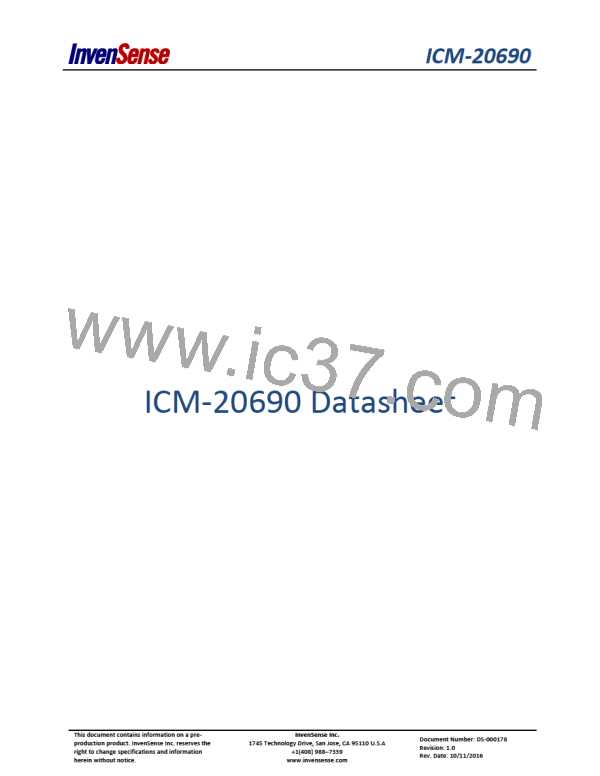ICM-20690
6.3 I2C COMMUNICATIONS PROTOCOL
START (S) and STOP (P) Conditions
Communication on the I2C bus starts when the master puts the START condition (S) on the bus, which is defined as a HIGH-to-LOW
transition of the SDA line while SCL line is HIGH (see figure below). The bus is considered to be busy until the master puts a STOP
condition (P) on the bus, which is defined as a LOW to HIGH transition on the SDA line while SCL is HIGH (see figure below).
Additionally, the bus remains busy if a repeated START (Sr) is generated instead of a STOP condition.
SDA
SCL
S
P
START condition
STOP condition
Figure 8. START and STOP Conditions
Data Format / Acknowledge
I2C data bytes are defined to be 8-bits long. There is no restriction to the number of bytes transmitted per data transfer. Each byte
transferred must be followed by an acknowledge (ACK) signal. The clock for the acknowledge signal is generated by the master,
while the receiver generates the actual acknowledge signal by pulling down SDA and holding it low during the HIGH portion of the
acknowledge clock pulse.
If a slave is busy and cannot transmit or receive another byte of data until some other task has been performed, it can hold SCL
LOW, thus forcing the master into a wait state. Normal data transfer resumes when the slave is ready, and releases the clock line
(refer to the following figure).
DATA OUTPUT BY
TRANSMITTER (SDA)
not acknowledge
DATA OUTPUT BY
RECEIVER (SDA)
acknowledge
SCL FROM
MASTER
1
2
8
9
clock pulse for
acknowledgement
START
condition
Figure 9. Acknowledge on the I2C Bus
Page 28 of 76
Document Number: DS-000178
Revision: 1.0

 TDK [ TDK ELECTRONICS ]
TDK [ TDK ELECTRONICS ]